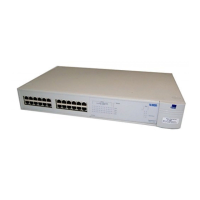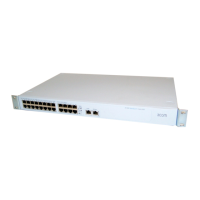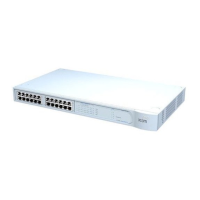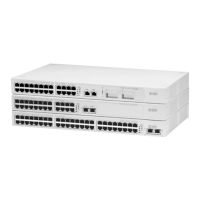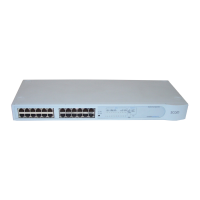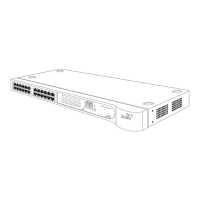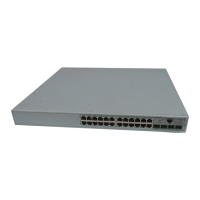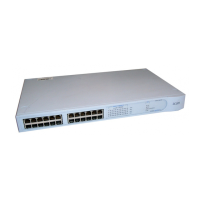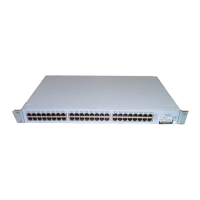122 C
HAPTER
4: W
ORKING
W
ITH
THE
C
OMMAND
L
INE
I
NTERFACE
■
If auto-negotiation is enabled on a 10BASE-T port, the duplex mode
of the link is automatically detected and set accordingly.
CAUTION:
The duplex mode of a link is not detected if the port on the
other end of the link is not auto-negotiating. In this case, the Switch port
is set to operate in half duplex:
■
If you want the link to operate in full duplex, set the Switch port to
operate in full duplex manually. For more information, see
“Specifying
the Speed and Duplex Mode”
on
page 121
.
■
If you want the link to operate in half duplex, set the port on the other
end of the link to half duplex.
You can enable and disable auto-negotiation for Ethernet ports on the
Switch using the
autoNegotiation
command on the Ethernet menu.
To enable or disable auto-negotiation for a port:
1
At the Top-level menu, enter:
ethernet autoNegotiation
The following prompt is displayed:
Select Ethernet port (1-24,all):
2
Enter the number of the port to have auto-negotiation enabled or
disabled, or enter
all
for all ports.
The following prompt is displayed:
Enter new value (enable,disable) [enable]:
3
Enter
enable
or
disable
.
If you are enabling or disabling auto-negotiation for all the ports, only the
ports which can support auto-negotiation are changed.
Fiber ports and Transceiver Module ports are not auto-negotiating. If the
port is one of these ports, auto-negotiation cannot be enabled.
If auto-negotiation is disabled, the speed and duplex mode of the port is
set using the
portMode
command. For more information, see
“Specifying
the Speed and Duplex Mode”
on
page 121
.
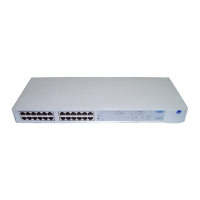
